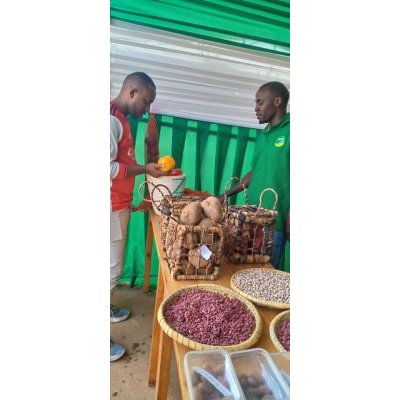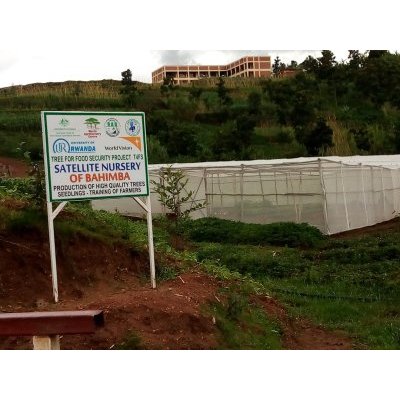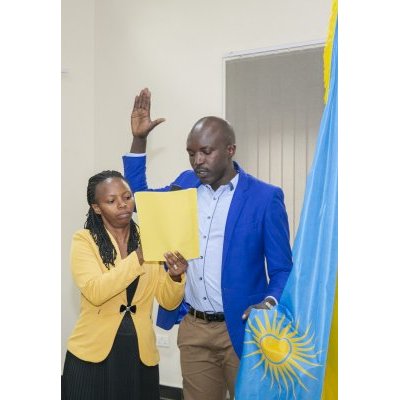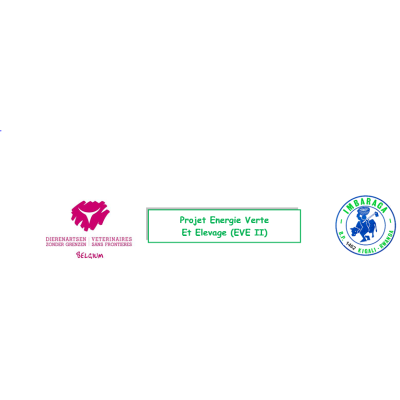



Project Name
e-Granary - uplifting smallholder farmers by access to markets and credit
Project Goal
To improve the income and living standards of participating e-Granary smallholder farmers in Tanzania, Uganda and Rwanda.
Project Objectives
Focusing on increasing productivity and profitability of participating e-Granary farmers.
Theory of Change
The theory of change of the programme is based on a fundamental premise that a market-driven approach coupled with bulking of produce and input requests are needed to help small holder farmers sustainably increase their income and improve their live hood. This is operationalized through the central role that EAFF and its membership at regional level plays in aggregating farmers into membership based organizations and the innovative use of digital platforms that will enable smallholders benefiting access to stable markets, accessing credit and productivity enhancement.
Project Outcomes
• E-Granary platform set up - and working with 90,000 new smallholder farmers registered onto the e-Granary
• Increase market access – 72,600 MT of product worth > 24 M USD sold on the market by small holder farmers
• Increase access to finance services – 26,900 smallholder farmers are receiving credit on their mobile phones
• Increased access to extension services – 8,300 smallholder farmers access agriculture extension services vi mobile phones
• Enhanced capacity of farmers on structured trade and financial literacy – 12800 smallholder farmers directly trained
• Increased public awareness and knowledge on the success of e-Granary – 30 Knowledge products developed and disseminated.
Grant Target Countries, Groups and Number of Beneficiaries
The target group will be smallholder farmers who are members of national organizations belonging to EAFF in Rwanda, Tanzania and Uganda. Targeted number of farmers of e-Granary are:
• 50,000 in Uganda (50% women), of which 50% from 10 Districts Farmers Associations (DFAs) affiliated to Uganda National Farmers Federation (UNFFE) and 50% from 60 Area Cooperative Enterprises (ACEs) affiliated to Uganda Cooperative Alliance (UAC)
• 20,000 in Rwanda (50% women) distributed among rice, maize and beans value chains of which 10,000 are from National Confederation of Cooperatives of Rwanda (NCCR) affiliated farmers organizations and 10,000 from IMBARAGA members
• 20,000 in Tanzania (50% women) of which 15,000 from farmers organizations affiliated to Tanzania Federation of Cooperatives (TFC) and 5,000 from FOs affiliated to MVIWATA (Mtandao wa Vikundi vya Wakulima Tanzania).
Project Duration
The project will run for 36 months
Project Activities
Component 1 – Access to Services
1. E-Granary platform set up – 90,000 smallholder farmers registered onto the e-Granary
o Registration campaign strategy developed and validated
o Country registration campaign teams formed; trained and dispatched
o Campaign and visibility materials developed and deployed in different languages
o Campaign platforms e.g: media engaged
o Set up of e-Granary: Acquisition of country licenses for e-Granary operations in the 3 countries; Customization of e-Granary to specific needs/circumstances of targeted farmers (including languages) and country
o Set up and operationalize the call centers
2. Increased market access 85,050 MT of product worth > 28M USD sold on the market by smallholder farmers
o Pilot market linkage model
o Roll out after “proof of concept”
o Map out and profile the relevant off-takers
o Organize business to business meetings with off takers to seek partnership
o Map out and profile farmers aggregation centers
o 25 supply contracts signed annually
o Seasonal harvest posted on e-Granary continuously
3. Increased access to finance services – 31,500 smallholder farmers received credits on their mobile phones
o Piloting of the credit model
o Roll out after “proof of concept”
o Develop and validate strategy to promote, increase and retain credit product uptake
o Development of promotion material for the credit product to farmers
o Farmers registered to e-Granary actively accessing credit annually and borrowing in subsequent years.
4. Increased access to extension services – 10,000 smallholder farmers access agriculture extension services via mobile phones
o Piloting of the extension modal
o Roll out after “proof of concept”
o Develop and validate strategy to promote, increase and e-extension product to farmers.
o Farmers registered on e-Granary actively accessing e-extension through the season.
Component 2 – Capacity Building and Knowledge Management
1. Enhanced capacity of farmers on structured trade and financial literacy
o Development of curriculum and training material for structured trade
o Development of curriculum and training materials for financial literacy
o Establish an agronomy support system for the e-extension.
o Training of Trainers (ToT), Training of Farmer Leaders, Managers and Representatives of target organizations (regional, national)
o Cascade training for smallholder farmers at the sub-national level
o Run two radio episodes per year on structured trade in 3 major radio stations in the target countries.
2. Increased public awareness and knowledge on the success of e-Granary
o Project fliers; pamphlets developed and disseminated.
o Knowledge management and learning events held internally for EAFF at national and regional level once a year
o Project steering committee held yearly
o Procurement of k-Macho software for M&E made every season
o Joint management between EAFF, MODE, Technology Advisor and any other additional partner every week
o Exchange learning visit made once a year to commodity exchange / off takers / between Fos.
o Project documentary development
o Project results and impacts posted online (including social media) and on mainstream media
IMPLEMENTING PARTNERS












